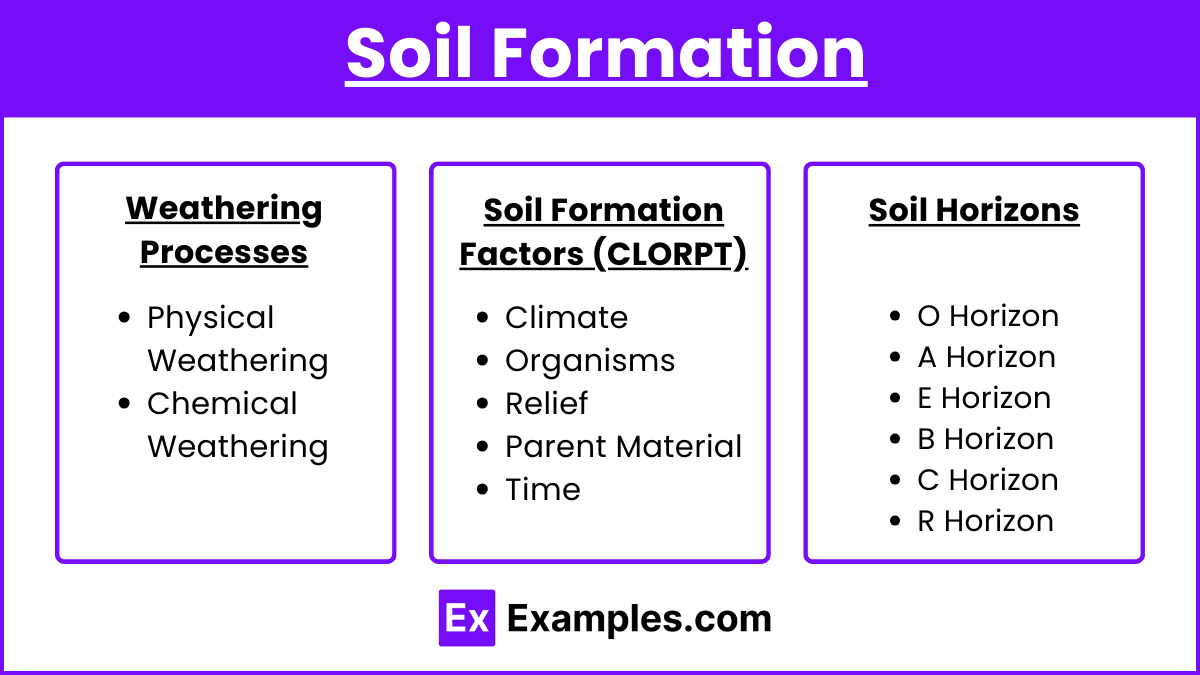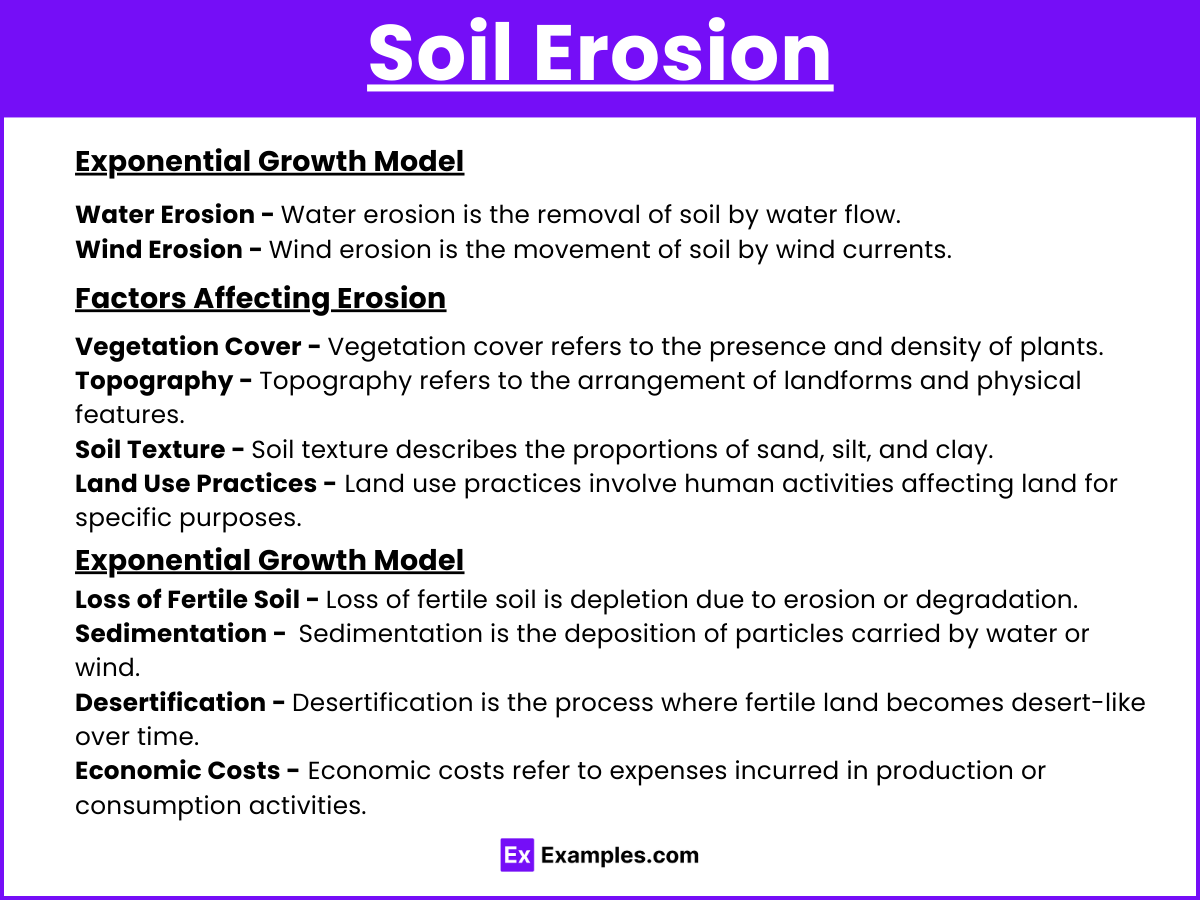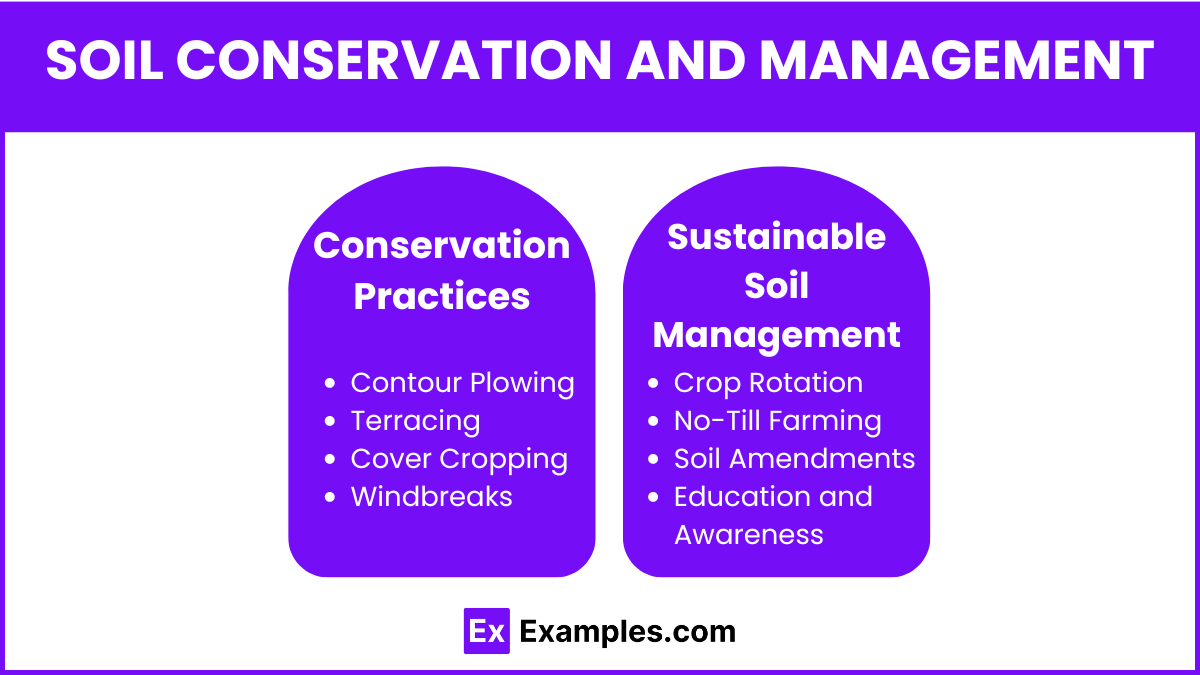Soil formation and erosion are critical processes within the realm of ecology and the biosphere, profoundly impacting ecosystems and biodiversity. Soil formation occurs through complex interactions involving weathering of parent material by physical, chemical, and biological processes. This process gives rise to distinct soil horizons that support diverse flora and fauna, contributing to ecosystem health and resilience. Conversely, soil erosion, accelerated by human activities such as agriculture and deforestation, threatens biodiversity by depleting fertile topsoil and disrupting nutrient cycles. Understanding these processes is essential for sustainable land management practices and maintaining ecological balance in the face of environmental challenges.
Free AP Environmental Science Practice Test
Learning Objective
Soil Formation and Erosion learning objectives encompass understanding the processes of soil development influenced by organisms, climate fluctuations, and parent material. Students will analyze soil horizons, their composition, and the role of flora and fauna in nutrient cycling and soil structure. They will evaluate how climate changes affect soil erosion rates and fertility, and assess human impacts on erosion through agriculture and land use practices. Mastery involves applying soil conservation strategies, recognizing their significance in maintaining biodiversity, ecosystem services, and sustainable agriculture in the AP Environmental Studies exam.
Soil Formation

Weathering Processes
Physical Weathering: Breakdown of rocks into smaller particles through physical forces like temperature changes, frost wedging, and root growth.
Chemical Weathering: Chemical reactions alter rock minerals, releasing nutrients and forming new compounds (e.g., dissolution, oxidation).
Soil Formation Factors (CLORPT)
Climate: Temperature and precipitation influence weathering rates and organic matter decomposition.
Organisms: Soil organisms (e.g., earthworms, bacteria) contribute to organic matter decomposition and nutrient cycling.
Relief: Topography affects water drainage and erosion rates, influencing soil depth and composition.
Parent Material: Rock type determines mineral composition and nutrient availability in the soil.
Time: Soil formation is a slow process, taking hundreds to thousands of years to develop mature soils.
Soil Horizons
O Horizon: Organic layer composed of decomposing plant material (humus).
A Horizon: Topsoil rich in organic matter and minerals; most fertile layer for plant growth.
E Horizon: Zone of leaching where minerals and organic matter are washed downward by water.
B Horizon: Subsoil containing accumulated minerals (illuviation) leached from above.
C Horizon: Parent material that has undergone minimal weathering.
R Horizon: Bedrock layer, partially weathered rock.
Soil Erosion

Types of Erosion
Water Erosion: Caused by rainfall and runoff, leading to loss of topsoil and nutrient depletion.
Sheet Erosion: Thin layer of soil removed uniformly across a surface.
Rill Erosion: Small channels form as runoff concentrates into rivulets.
Gully Erosion: Deep channels carved into soil by concentrated water flow.
Wind Erosion: Wind removes fine soil particles (sand, silt) from exposed surfaces, causing soil loss and desertification.
Erosion by Gravity: Mass movement of soil downslope due to gravity (e.g., landslides, slumps).
Factors Affecting Erosion
Vegetation Cover: Plants reduce erosion by stabilizing soil with roots and intercepting rainfall.
Topography: Steep slopes increase erosion risk by accelerating runoff and soil movement.
Soil Texture: Fine-textured soils (clay) are more prone to erosion than coarse-textured soils (sand).
Land Use Practices: Agriculture, deforestation, and construction can accelerate erosion by exposing soil to erosive forces.
Impacts of Soil Erosion
Loss of Fertile Soil: Reduced agricultural productivity and food security.
Sedimentation: Contaminates water bodies, affecting aquatic ecosystems and water quality.
Desertification: Land degradation leading to desert-like conditions, unsuitable for vegetation growth.
Economic Costs: Increased sedimentation in reservoirs, infrastructure damage, and loss of biodiversity.
Soil Conservation and Management

Conservation Practices
Contour Plowing: Planting crops parallel to the contour of the land to reduce runoff and erosion.
Terracing: Building steps into steep hillsides to create flat surfaces for farming, reducing erosion.
Cover Cropping: Planting cover crops during off-seasons to protect soil from erosion and improve fertility.
Windbreaks: Planting trees or shrubs as wind barriers to reduce wind erosion.
Sustainable Soil Management
Crop Rotation: Alternating crops to improve soil fertility and reduce pest and disease pressure.
No-Till Farming: Planting crops without disturbing the soil, minimizing erosion and preserving soil structure.
Soil Amendments: Adding organic matter (compost, manure) to improve soil structure and nutrient content.
Education and Awareness: Promoting soil conservation practices among farmers and landowners to foster sustainable land use.
Case Studies and Examples
Dust Bowl (1930s, United States)
Severe wind erosion in the Great Plains due to intensive farming practices and drought, leading to massive soil loss and economic devastation.
Lessons learned: Importance of soil conservation practices and sustainable land management.
Soil Erosion in Sub-Saharan Africa
Deforestation, overgrazing, and unsustainable agricultural practices contribute to severe soil erosion, threatening food security and livelihoods.
Solutions: Promoting agroforestry, soil conservation techniques, and sustainable farming practices.


